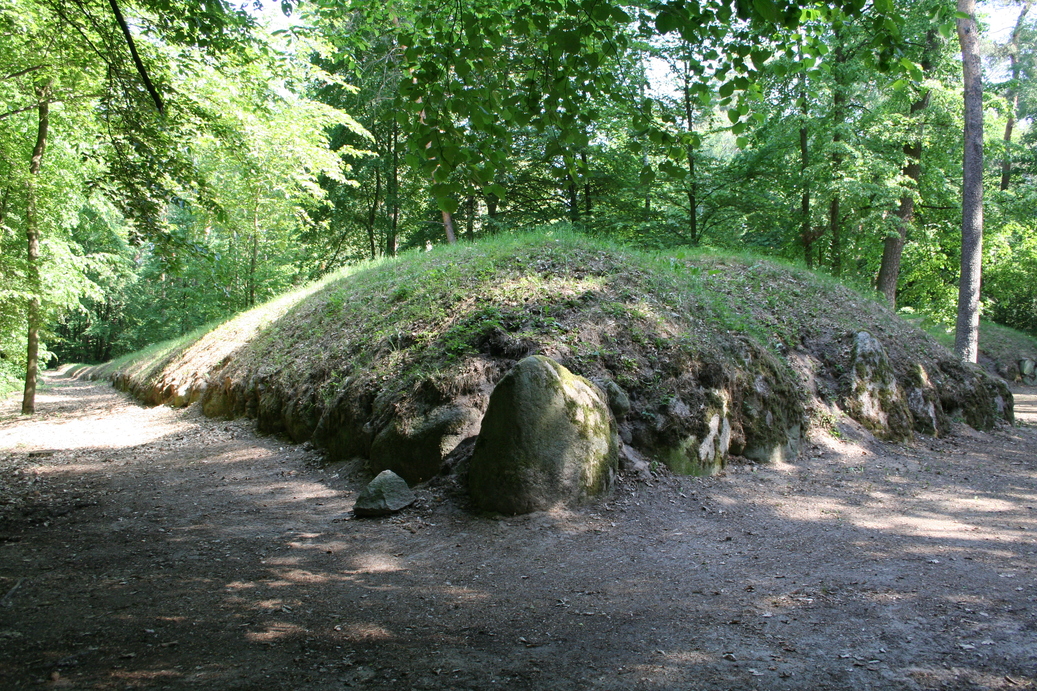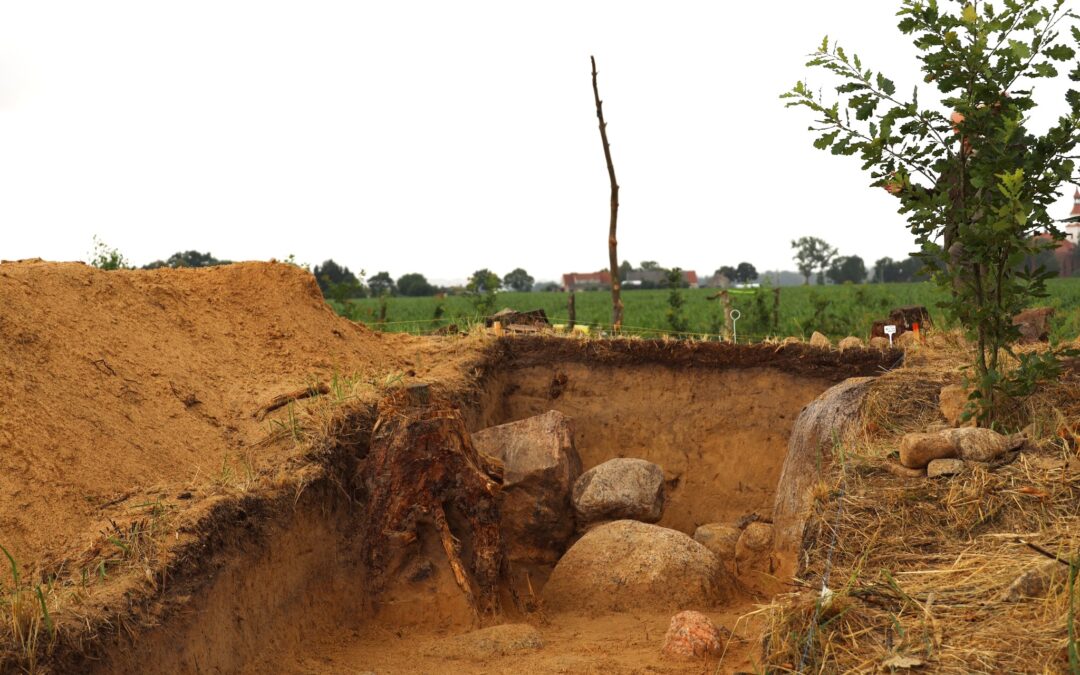Keep our news free from ads and paywalls by making a donation to support our work!

Notes from Poland is run by a small editorial team and is published by an independent, non-profit foundation that is funded through donations from our readers. We cannot do what we do without your support.
Archaeologists in Poland have discovered a set of 5,500-year-old triangular structures that have been nicknamed “Polish pyramids”, and which contain megalithic tombs from one of the region’s oldest sedentary agricultural societies.
The mounds were discovered in the Wielkopolska province by researchers from Adam Mickiewicz University in Poznań during a routine field survey in Chłapowski Landscape Park in the village of Wyskoć.
The megaliths in Wyskoć are elongated earth mounds up to 200 metres long, constructed in the form of an elongated triangle, whose front was several metres wide and about four metres high. The mound gradually narrows and lowers, passing into a so-called tail.
Archaeological studies of two out of five of the newly discovered sites, including excavation of one of them, confirmed that they were created 5,500 years ago by the people of the Funnelbeaker culture at the end of the Stone Age.
“Although the Funnelbeaker cultures were fairly egalitarian communities, individuals important to the population – a leader, a priest, a shaman – were buried in tombs,” Artur Golis, chief specialist for nature and landscape protection from the Wielkopolska Province Landscape Parks Complex, told the Polish Press Agency (PAP).
Such tombs usually contained a single skeletal burial. The body was laid in an upright position on its back with its legs pointing towards the front of the megalith, eastward. The tomb was furnished with grave goods and surrounded by a separate stone enclosure.
“In the case of this megalith, the skeleton probably no longer survives, but the burial offerings might,” Golis explained, saying that potential finds could include stone axes and hatchets, pottery, and copper ornaments.
Due to their large size and triangular shape, tombs of this type are referred to as “Polish pyramids” or “the beds of giants” and are considered to be among the largest such structures in prehistoric Poland.
However, professionally, they are known as megalithic tombs of the Kuyavian type, since most finds in Poland have been made in the Kuyavia-Pomerania province. Only once before, in 2019, were such pyramids found in Wielkopolska.

A Stone Age burial mound discovered in Kuyavian-Pomeranian province (credit: Einsamer Schütze/Wikimedia Commons, under CC BY-SA 4.0)
At the head of the megalith, boulders were placed vertically, the largest weighing up to several tonnes. The front of the megalith was oriented to the east and the tail to the west. Some of the boulders are now displaced due to the passage of time, while others have disappeared completely.
“For thousands of years, people have needed the stones, so they have taken them, split them, hence the object has been quite heavily degraded,” Golis told PAP.
For the time being, the discovery site remains closed to visitors. After excavation work has been completed, a decision will be made on whether to open the megaliths to the public.
Police are searching for unknown perpetrators who found a horde of over 100 Bronze Age objects during an illegal dig and then left them outside a local historical society
"It is one of the biggest treasures found in Poland in recent years," say the police https://t.co/7n9CkNeBf5
— Notes from Poland 🇵🇱 (@notesfrompoland) October 22, 2024

Notes from Poland is run by a small editorial team and published by an independent, non-profit foundation that is funded through donations from our readers. We cannot do what we do without your support.
Main image credit: Zespół Parków Krajobrazowych Województwa Wielkopolskiego/FB

Agata Pyka is a former assistant editor at Notes from Poland. She specialises in Central and Eastern European affairs, cybersecurity, and investigative reporting. She holds a master’s degree in political communication from the University of Amsterdam, and her work has appeared in Euractiv, the Balkan Investigative Reporting Network (BIRN), and The European Correspondent, among others.



















